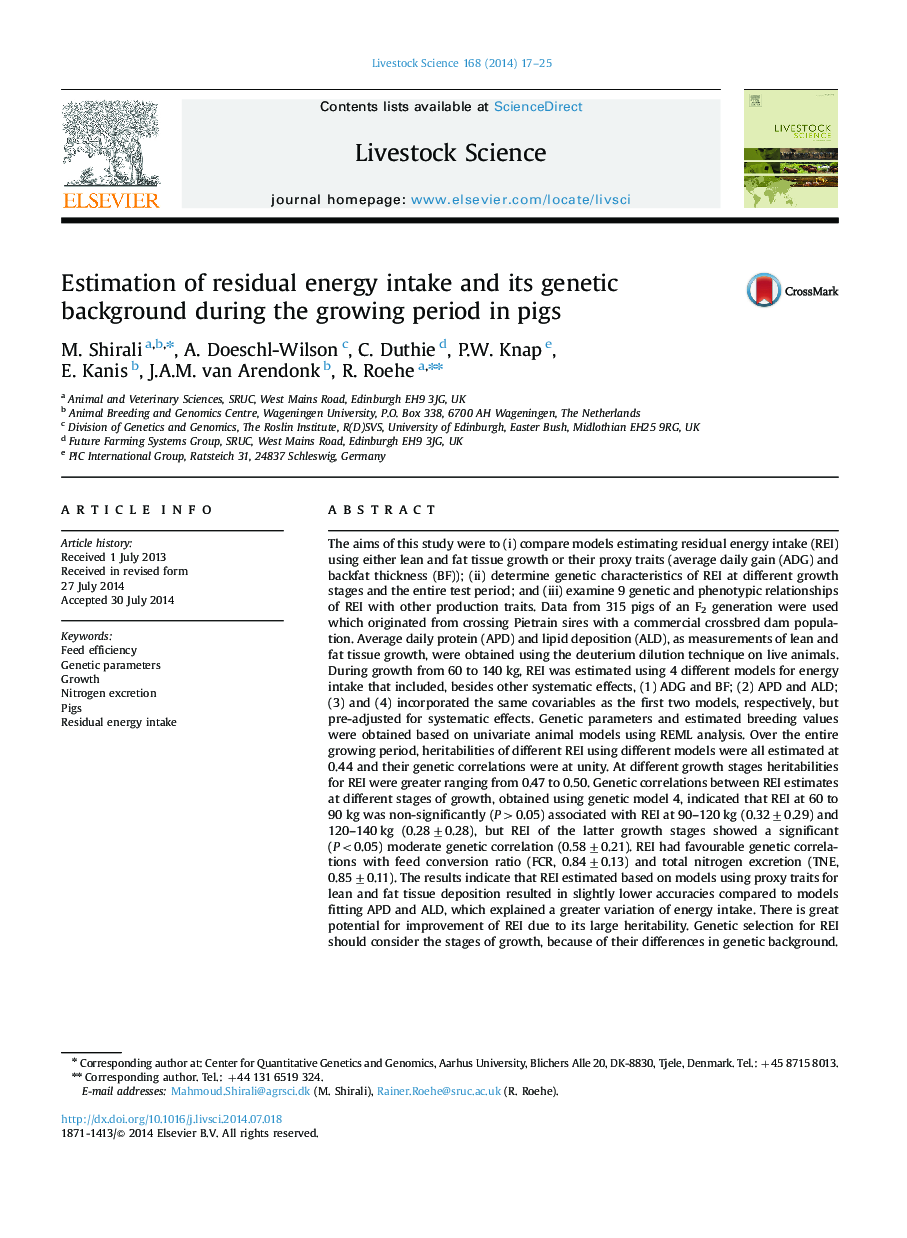| کد مقاله | کد نشریه | سال انتشار | مقاله انگلیسی | نسخه تمام متن |
|---|---|---|---|---|
| 2447260 | 1553964 | 2014 | 9 صفحه PDF | دانلود رایگان |
• There is great potential for improvement of residual energy intake.
• Genetic selection for feed efficiency should consider the stages of growth.
• Selection for feed efficiency would result in reduction of nutrient excretion.
The aims of this study were to (i) compare models estimating residual energy intake (REI) using either lean and fat tissue growth or their proxy traits (average daily gain (ADG) and backfat thickness (BF)); (ii) determine genetic characteristics of REI at different growth stages and the entire test period; and (iii) examine 9 genetic and phenotypic relationships of REI with other production traits. Data from 315 pigs of an F2 generation were used which originated from crossing Pietrain sires with a commercial crossbred dam population. Average daily protein (APD) and lipid deposition (ALD), as measurements of lean and fat tissue growth, were obtained using the deuterium dilution technique on live animals. During growth from 60 to 140 kg, REI was estimated using 4 different models for energy intake that included, besides other systematic effects, (1) ADG and BF; (2) APD and ALD; (3) and (4) incorporated the same covariables as the first two models, respectively, but pre-adjusted for systematic effects. Genetic parameters and estimated breeding values were obtained based on univariate animal models using REML analysis. Over the entire growing period, heritabilities of different REI using different models were all estimated at 0.44 and their genetic correlations were at unity. At different growth stages heritabilities for REI were greater ranging from 0.47 to 0.50. Genetic correlations between REI estimates at different stages of growth, obtained using genetic model 4, indicated that REI at 60 to 90 kg was non-significantly (P>0.05) associated with REI at 90–120 kg (0.32±0.29) and 120–140 kg (0.28±0.28), but REI of the latter growth stages showed a significant (P<0.05) moderate genetic correlation (0.58±0.21). REI had favourable genetic correlations with feed conversion ratio (FCR, 0.84±0.13) and total nitrogen excretion (TNE, 0.85±0.11). The results indicate that REI estimated based on models using proxy traits for lean and fat tissue deposition resulted in slightly lower accuracies compared to models fitting APD and ALD, which explained a greater variation of energy intake. There is great potential for improvement of REI due to its large heritability. Genetic selection for REI should consider the stages of growth, because of their differences in genetic background. REI explained a large portion of variance in FCR and TNE, therefore selection for REI is expected to result in, besides improvement of feed efficiency, a substantial reduction in the environmental pollution of pig production.
Journal: Livestock Science - Volume 168, October 2014, Pages 17–25
